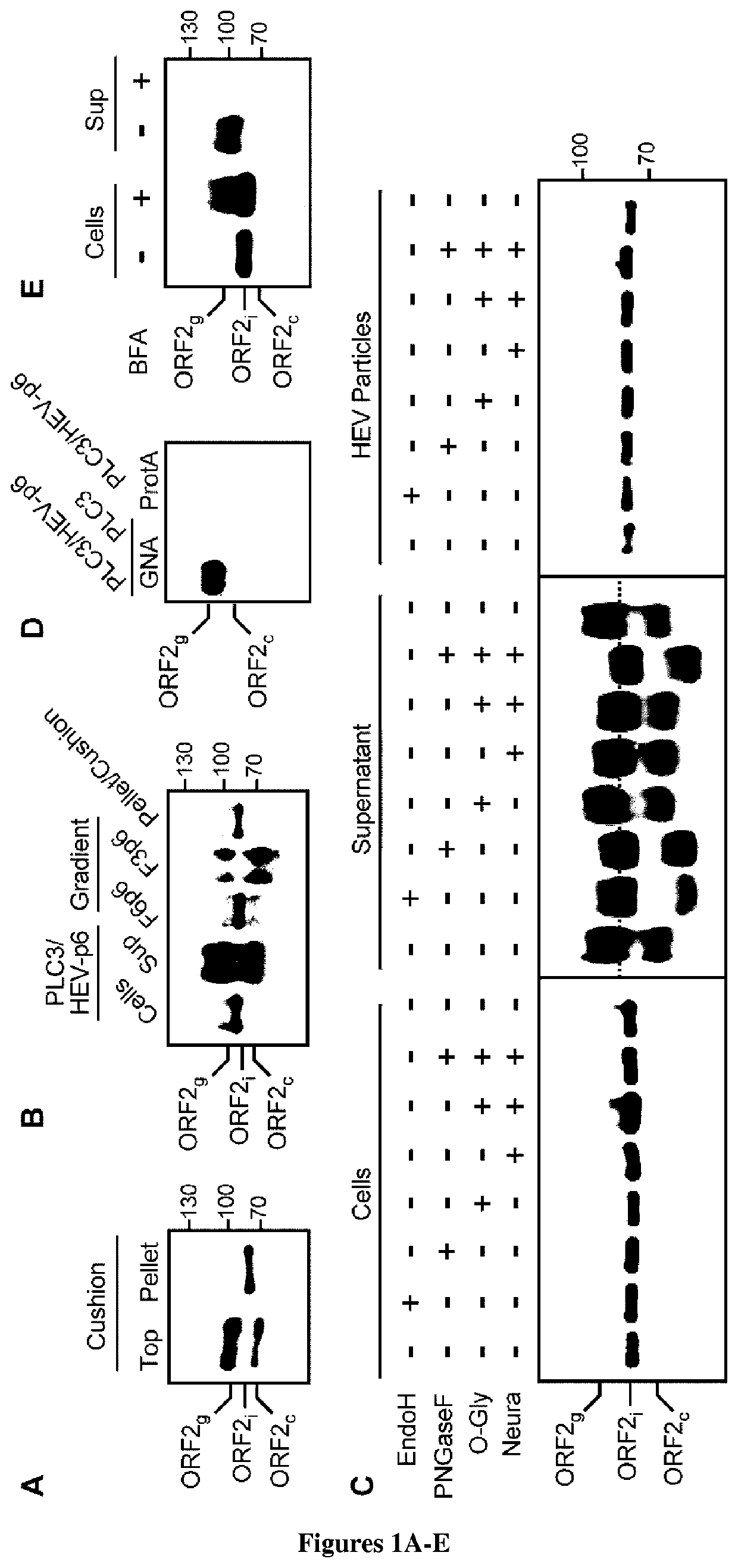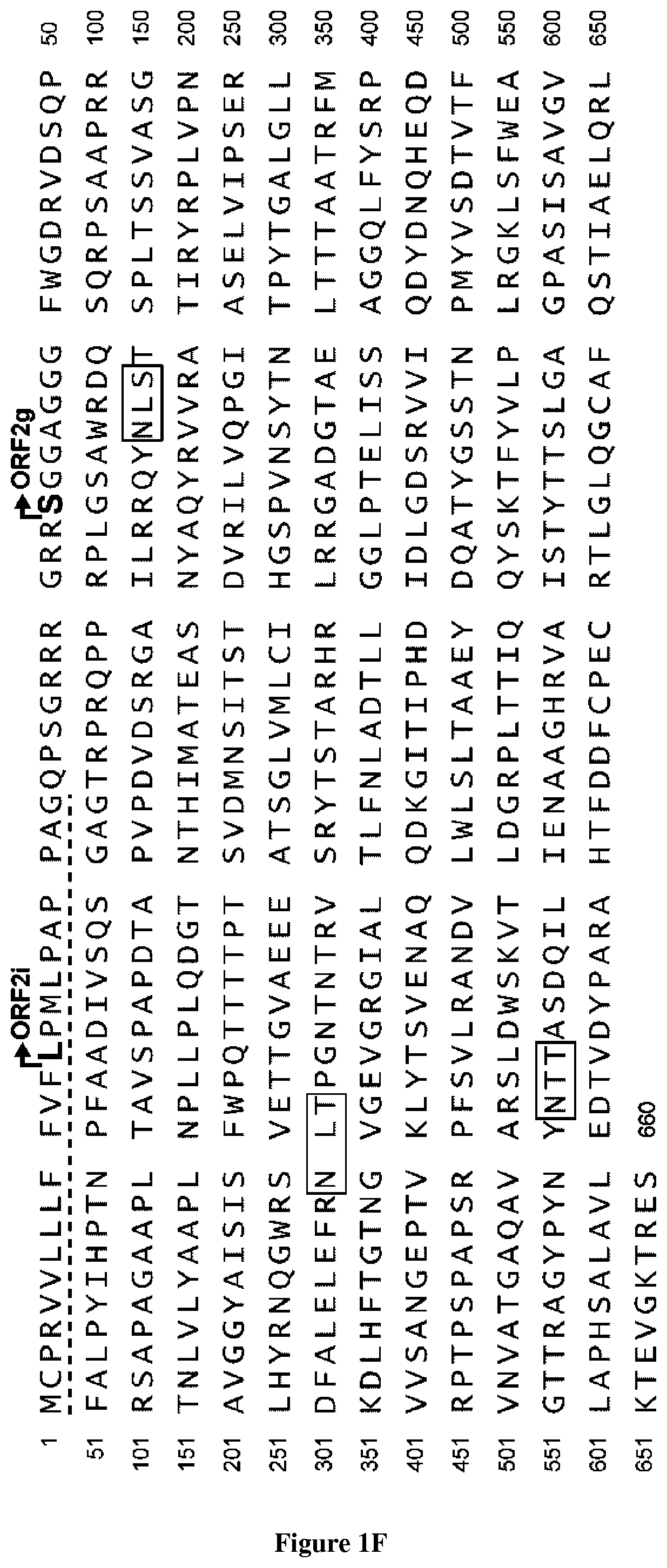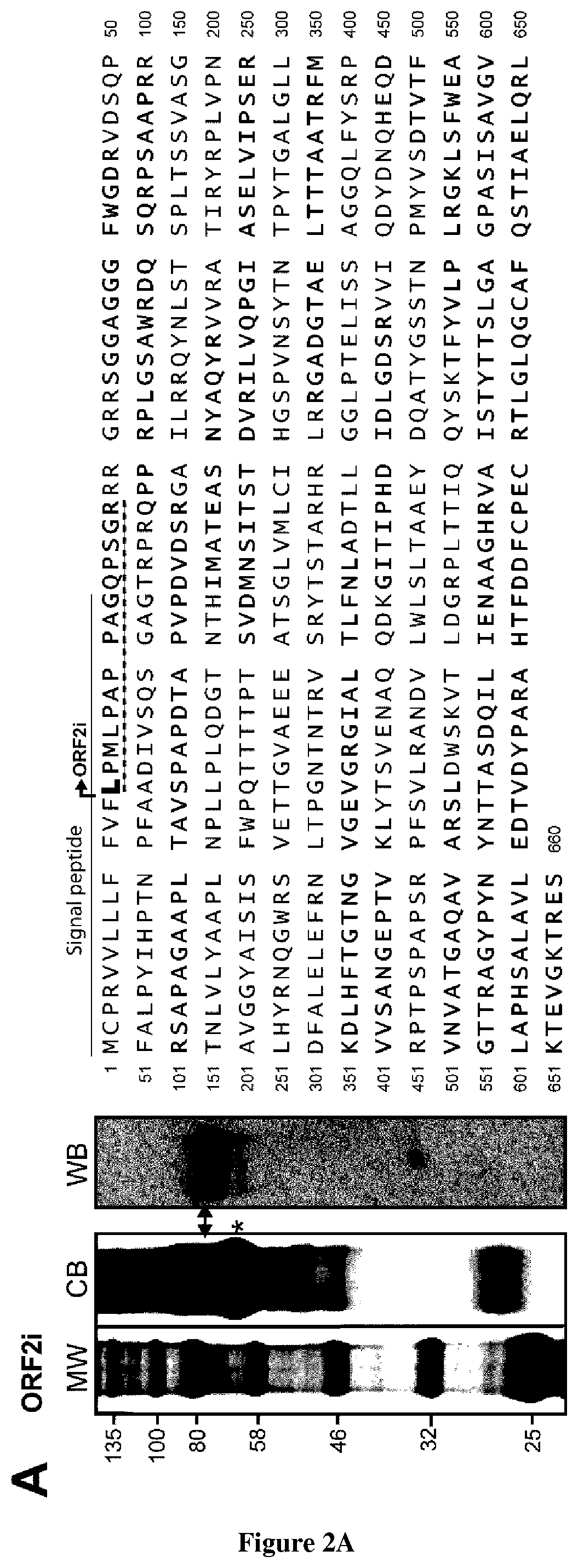Hepatitis e virus orf2 capsid polypeptides and uses thereof
a technology capsid polypeptides, which is applied in the field of hepatitis e virus orf2 capsid polypeptides, can solve the problems of low infectious titers, difficult growth of hev in cell culture, and high mortality rate of pregnant women
- Summary
- Abstract
- Description
- Claims
- Application Information
AI Technical Summary
Benefits of technology
Problems solved by technology
Method used
Image
Examples
example 1
[0039]Materials and Methods
[0040]Chemicals and Cell Cultures.
[0041]PLC / PRF / 5 (CRL-8024), PLC1, PLC3 and A549 (CCL-185) cells were grown in Dulbecco's modified Eagle's medium (DMEM) supplemented with 10% inactivated fetal calf serum (DMEM / FCS) at 37° C. Transfected cells were maintained at 32° C. in a medium containing DMEM / M199 (1v:1v), 1 mg / ml of lipid-rich albumin (Albumax I™) and 40 nM Na2SeO3.
[0042]Plasmids and Transfection.
[0043]Plasmids expressing the cell culture adapted gt3 Kernow C-1 strain (HEV-p6, GenBank accession number JQ679013) or the replicon expressing the Gaussia luciferase gene (HEV-p6GLuc) were provided by S.U Emerson6. The replication-deficient replicon HEV-p6GLucGAD was generated by mutating the GDD motif into the RNA-dependent RNA polymerase gene7. Capped RNA transcripts were generated with the mMESSAGE mMACHINE® kit (Ambion). Capped RNAs were delivered to cells by electroporation using a Gene Pulser Xcell™ apparatus (Bio-Rad).
[0044]Kinetics Experiments and Vi...
example 2
[0095]Generation of Specific Antibodies Directed Against the ORF2i Protein.
[0096]A peptide (P1) that derives from the polypeptide of the present invention (ORF2i) was synthetised and coupled to KLH. Five mice were immunized three times at three weeks intervals with the P1 peptide. Freund's complete and incomplete adjuvants were used during immunisation. The animals were immunized by subcutaneous and intraperitoneal routes. Ten days after the third immunisation, mice have been bleeded and their sera tested for immunoreactivity. Sera were first assayed by indirect ELISA on plates coated with the P1 peptide (data not shown). Their specificity was next analyzed in western blotting experiments with a mixture of ORF2 proteins (ORF2i and ORF2g / ORF2c) as antigens (FIG. 4). Two (P1S2 and P1S5) out of five sera showed a highly specific recognition of the ORF2i protein, with no cross-reaction with the ORF2g / c proteins, as compared to the 1E6 antibody that recognizes the three forms (FIG. 4). C...
PUM
| Property | Measurement | Unit |
|---|---|---|
| mass | aaaaa | aaaaa |
| mass | aaaaa | aaaaa |
| mass | aaaaa | aaaaa |
Abstract
Description
Claims
Application Information
 Login to View More
Login to View More - R&D
- Intellectual Property
- Life Sciences
- Materials
- Tech Scout
- Unparalleled Data Quality
- Higher Quality Content
- 60% Fewer Hallucinations
Browse by: Latest US Patents, China's latest patents, Technical Efficacy Thesaurus, Application Domain, Technology Topic, Popular Technical Reports.
© 2025 PatSnap. All rights reserved.Legal|Privacy policy|Modern Slavery Act Transparency Statement|Sitemap|About US| Contact US: help@patsnap.com



